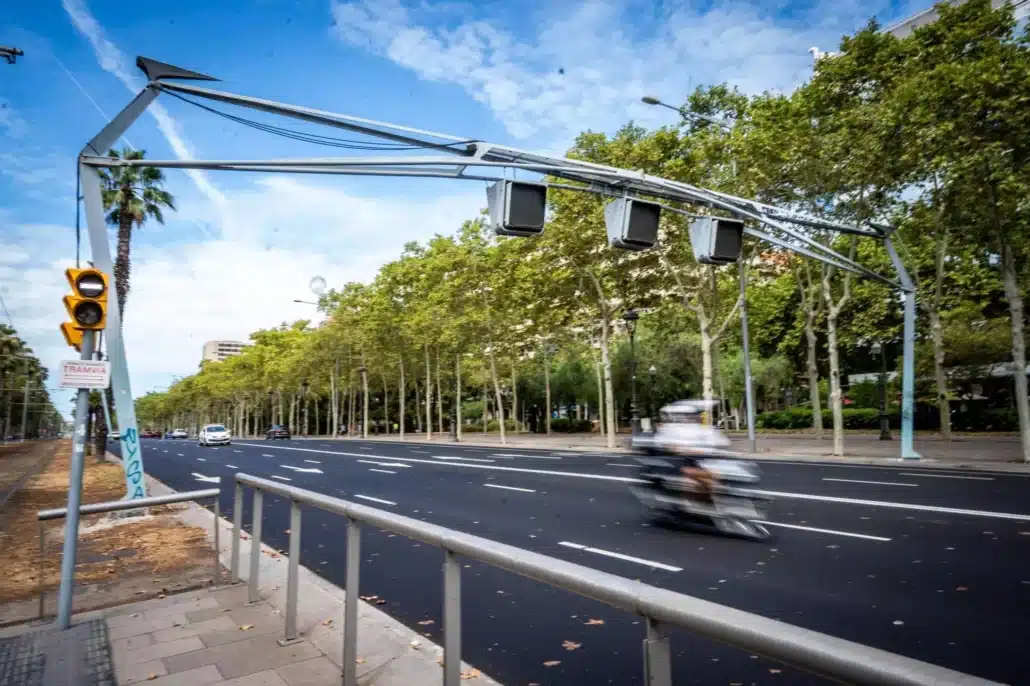Collective road transport in Barcelona is at the center of the debate, and not for nothing. The city, one of the main tourist and business destinations in Europe, faces an infrastructure deficit to adequately manage the growing flow of intercity, national and international buses. Despite the recent tender for the drafting of the study and project for the new bus station at Plaça d’Espanya, the problem is still not completely solved. The Diagonal has become the big weak point in this equation.

Currently, the Department of Territory has three proposals on the table that seek to solve the lack of adequate infrastructure in this key artery of the city. These proposals, which must be discussed with those responsible for Mobility of the consistory, offer different alternatives that vary in location and capacity to respond to current and future demand.
A problem of flows and accessibility
The big challenge around the Diagonal is undoubtedly the management of passenger and bus flows. In a city like Barcelona, which receives 180,000 passengers per day in intercity transport, it is crucial to evaluate how these lines enter the city, how many docks (parking spaces) are needed and what impact they have on urban circulation. In addition, consideration must be given to how these infrastructures can be integrated with the existing public transport system to facilitate commuter mobility. However, this problem does not only concern the authorities, but also the bus operating companies. For them, the objective is clear: their passengers want to get as close as possible to the center. This is a challenge, because while it is necessary to decongest the urban core, reasonable accessibility must also be ensured for passengers who prefer to avoid long journeys from the terminals.
Proposals on the table: Zona Universitària, Maria Cristina and Francesc Macià
The preliminary study carried out by Barcelona Regional (BR) contemplates three key locations for the future bus station on Diagonal. Each with advantages and disadvantages, but all with the objective of improving connectivity and relieving pressure on current infrastructure.
TMB uses telemetry system to track its buses in Barcelona
- Zona Universitària: The most perimeter option of the three, located next to the Business School and the Polytechnic University of Catalonia (UPC). This project proposes two levels: one with 39 parking bays and the other for a park & ride parking lot for 400 vehicles. From here, travelers could continue their journey by metro (L3 and L9), streetcar or city buses. However, according to growth simulations, this option would fall 30% short of the capacity needed in the most optimistic scenario.
- Maria Cristina: A location closer to the center, in front of the headquarters of La Caixa on Diagonal. This project contemplates 24 docks, which would be insufficient for the current demand, falling 25% below the required capacity. Although better located than the previous proposal, this project presents space challenges that would require doubling the capacity to meet projected demand.
- Francesc Macià: The most central option, located on Diagonal just before Plaça Francesc Macià. Although the nearest metro is about 500 meters away (Hospital Clínic, L5), it is expected that by the time the station becomes a reality, the FGC branch line that will connect the Llobregat and Anoia lines with the Vallès lines will already be in operation. This proposal includes two options: one floor with 34 docks or a two-level design with 25 stopping docks and 25 regulation docks each. The latter option is the only one that could assume the most optimistic scenario of intercity bus growth.
A context of growth and the need for infrastructure
Road transport in Barcelona remains essential, and demand is expected to grow significantly in the coming years. The forecast increase in interurban and national lines, coupled with the territorial concession that should be a reality by 2028, points to a sustained growth in road transport. This, in turn, requires strategic planning to decongest access roads to the city, such as Meridiana, Gran Via and, of course, Diagonal.
Classic bus parade in Barcelona to travel through time
The current situation in Barcelona is often compared to that of a small town where the bus stops are in the middle of the street. But the reality is very different: Barcelona handles 180,000 passengers a day, which would make it the fifth largest city in Catalonia if it were an independent city. The overcrowded bus stops in the middle of the street, such as those on Avinguda de Sarrià with Urgell or the Universitat ring road, are clear examples of the urgent need for more adequate infrastructures.
The Diagonal is the critical point in this equation.
Barcelona faces a key challenge in managing its road transport. The Diagonal is the critical point in this equation, and the three proposals presented will need to be carefully evaluated to choose the one that best suits the city’s long-term needs. With a projected 50% growth in intercity lines, the decision on the location and capacity of the new station will be critical to ensure that Barcelona can efficiently manage mass transit, reduce the influx of private cars into the city, and improve the quality of life for residents and visitors alike.
